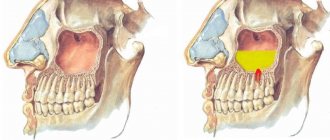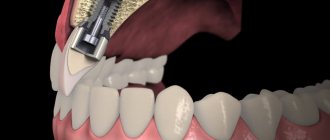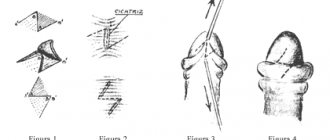Bleeding is one of the most dangerous complications in dental surgery and can occur both during and after surgery. Patients requiring any type of bone grafting should always be informed by the dentist about the possible risks and precautions that must be taken during the rehabilitation period. Sinus lifting and other osteoplasty options, thanks to innovative surgical techniques and high-tech equipment, are safe and are accompanied by a low risk of bleeding.
To keep the patient as safe as possible, a thorough preoperative assessment is performed to rule out conditions that predispose to bleeding during or after surgery. The dentist also instructs the patient in detail on how to behave after the operation and what restrictions should be followed. The appearance of bleeding or spotting from the area of a postoperative wound should always be treated with caution. In some cases, you can eliminate increased bleeding yourself at home, while in other cases, qualified medical care is necessary.
How often does bleeding occur after bone grafting and sinus lifting?
Every person has experienced bleeding of varying severity at least once in their life. Bleeding is always accompanied by a violation of the integrity of the skin and other tissues in the body. Intense bleeding is a life-threatening condition and requires immediate stopping using special methods. In other cases, when the bleeding is small, the body's compensatory systems are triggered, which contribute to the formation of local microthrombi and the cessation of blood loss from the bleeding vessel.
Any osteoplastic operation, even such a microsurgical and minimally invasive one as a sinus lift, is accompanied by some damage to tissues and blood vessels and, naturally, it is accompanied by bleeding.
Controlled bleeding during surgery is a planned natural reaction of the body to tissue damage and can be easily and instantly stopped in an operating room. The severity of bleeding directly depends on the volume of the operation, its traumatic nature, and the number of implants being implanted. However, during sinus lifting and other osteoplastic surgeries, blood loss is minimal and does not affect the functioning of the body and the person’s well-being. Typically, the operation is bloodless and easily tolerated by patients.
After surgery, in the first few days it is considered normal to release a small amount of blood or ichor from the area of the postoperative wound. Also, the body’s natural reaction is:
- Pain in the surgical area, easily relieved with painkillers;
- Swelling, but not more than three days;
- Increase in body temperature to subfebrile levels (about 37-38);
- Hyperemia of tissue around the postoperative wound;
The above phenomena, during the normal course of the postoperative period, do not cause significant discomfort to the patient and are easily relieved with the help of the treatment prescribed by the surgeon. Positive dynamics should also be noted, that is, bleeding, swelling, pain and other unpleasant symptoms should subside within 3-7-10 days, depending on the complexity of the operation. Therefore, before undergoing a sinus lift or other type of bone grafting, you need to be prepared for the fact that at first there will be minor bleeding, swelling and pain, and not to panic if such symptoms appear.
First aid for yourself if blood is already flowing
Bleeding from the gums may not seem catastrophic, but it is still not a reason to lose blood, especially since the patient is unlikely to drop everything and immediately go to the dentist. Even if the bleeding seems severe, the first task is to calm down and take care of stopping it here and now. There are several ways to do this:
- cool the bleeding area - apply ice to the outside of your cheek for 15-20 minutes;
- press the wound (but not too much!) with a piece of bandage or a gauze cloth - also for 20 minutes;
- hold cold water in your mouth, making a “bath” for the bleeding area - usually 5 minutes is enough, but you can repeat it if it doesn’t help the first time;
- soak a black tea bag in water and apply it to the wound in your mouth;
- Apply the medications recommended by the doctor to the operated area.
If bleeding begins after a period of calm, and it cannot be calmed down for a long time for at least a day, this is already a sufficient reason to seek advice from a dentist.
When is bleeding dangerous?
The risk of massive bleeding during bone grafting is extremely low, since during the preoperative diagnosis the doctor excludes conditions against which this dangerous complication may develop. Therefore, you should not worry about bleeding during a sinus lift or other surgery. Thanks to several decades of experience, modern technologies and drugs, bone grafting is a quick and safe procedure that does not pose a threat to the patient’s life.
However, bleeding may occur later, at home, several days or even weeks after surgery. There are two main pathological conditions in which bleeding may occur after sinus lifting and bone grafting - vessel damage, hypertensive reaction, peri-implantitis and implant rejection.
Prevention
After implantation surgery, your doctor will prescribe you certain medications that will help minimize the possibility of these complications occurring. The main thing is to follow the doctor’s recommendations, carefully examine the surgical area, try to avoid solid foods (crackers, nuts), and monitor oral hygiene (carefully brush your teeth, rinse your mouth after eating). If something worries you, you should definitely contact a specialist, and not self-medicate or search for answers on the Internet. Doctors at the Golden Section clinic are always ready to answer all your questions.
Hypertensive reaction
In cases of sinus lift surgery performed on a patient with hypertension, there is always the possibility of a delayed increase in pressure when the patient returns home or after 12 hours. To prevent such reactions, our in-house anesthesiologist performs preparation and surgery in a state of light sedation to exclude a psycho-emotional reaction with an increase in pressure during treatment and 24 hours later. Combo sedation guarantees 100% delayed hypertensive surges in the anesthesiology department.
Forewarned is forearmed
Despite the extensive list, all types of complications, as we said earlier, are rather exceptions to the rules that you should be aware of, but you should not be afraid of them. By choosing the Golden Section dental clinic, which has extensive experience in performing dental implantation surgery, you minimize the likelihood of complications.
Notes
- Sinusitis is inflammation of the mucous membrane of the maxillary sinus. Manifested by increased temperature, pain, and nasal congestion.
- Computed tomography is a method of layer-by-layer examination of internal organs using x-rays.
- Orthopantomogram is an overview, general photograph of all teeth and jaws using x-rays.
- Guide templates are specially made plastic caps with a hole. When applied to the gum, they help determine the location and direction of bone treatment.
- 3D implantation planning is performed using a specific computer program, which, based on the patient’s data, creates a computer volumetric model of the jaw and allows you to analyze in detail all the stages of implantation.
- Hypertension (arterial hypertension) is a persistent increase in blood pressure.
- According to the international company Nobel Biocare Russia.
Peri-implantitis and bleeding
One of the most dangerous and severe inflammatory processes in the oral cavity is peri-implantitis. It occurs when trying to combine bone grafting or sinus lifting with implantation under unfavorable conditions. Inflammation develops around an installed dental implant and, if treatment is not started in a timely manner, can lead to serious consequences. The main reasons for the development of this pathology are non-compliance with the technique of surgical intervention and implantation, inadequate sanitation of the oral cavity before the procedure, or the use of low-quality structures for implantation.
The development of such a pathological condition can be suspected if the patient experiences severe pain and swelling in the implant area, increased bleeding of the gums, suppuration (with the addition of a bacterial infection), and impaired implant fixation. Bleeding against the background of the above symptoms is a dangerous sign, so you should immediately consult a doctor. The most severe consequence of the disease is bone tissue atrophy, which subsequently requires surgical correction. Treatment for this pathology should be aimed at eliminating inflammation and foci of infection in the oral cavity.
Bleeding in such conditions occurs a week after surgery in a state of complete rest and without any irritants.
Problems during the second surgical stage
The second stage of dental implantation involves:
- opening the implant (to do this, the doctor cuts the gum above it);
- removing the plug;
- installation of a gum former.
Due to disorders of bone regeneration, the intraosseous element is twisted, and when implanting teeth in the upper jaw, it is pushed into the maxillary sinus. This complication is prevented at the stage of formation of bone tissue around the implant - during the period of osseointegration, CT is periodically performed to monitor the formation of bone structures.
There are opposite situations when the top of the implant is overgrown with bone tissue. This process is not considered a complication and does not have a special impact on the implantation process. The doctor cuts the periosteum and removes excess with a saw to properly install the healing abutment.
Implant rejection
The materials from which implants are made in modern dentistry are, in the vast majority of cases, normally accepted by the body's defense systems. Therefore, the risk of implant rejection after sinus lifting and bone grafting is extremely low. However, implant rejection sometimes occurs in patients and without timely diagnosis and treatment can lead to serious health consequences.
The most unpleasant thing is that when an implant is rejected there is never a violent pain reaction or severe bleeding, but periodically minor bleeding occurs that quickly passes. The main bad sign is the unpleasant odor that accompanies bleeding from the area of previous surgery.
There are a number of pathological conditions in which the risk of rejection increases significantly. These include congenital and acquired immunodeficiency, autoimmune diseases, diseases of the endocrine system. Bleeding is one of the symptoms of implant rejection, and if the rejection process begins in the first days after the intervention, the bleeding can be quite intense. Also, with rejection, symptoms characteristic of inflammation progress (pain, swelling, redness of tissue, fever). Normally, signs of inflammation should subside 7-10 days after the intervention. However, if bleeding, pain and other unpleasant sensations persist for longer, then you must be examined by a dentist to rule out incipient implant rejection. Treatment of this rare complication is carried out surgically against the background of antibacterial and anti-inflammatory therapy.
Risks of dental implantation
Just what is happening with the market for implantation offers will cheer up anyone. A huge number of unsubstantiated statements knocks the patient off his feet and the discomfort increases with repeated consultations in other clinics. The surprising thing is that in Russia the price of an implantation service is a measure of the level of quality of the service. There are stories of “no name” implants being placed in VIP clinics with prices starting from 90 thousand rubles for the implant alone. Or stories about replacing the implant specified in the contract with another one.
The patient is not an expert in this field; he trusts his health to the doctor. After reading too much on the Internet, an element of uncertainty and randomness remains in the human mind. Careful reading of the contracts of some clinics sometimes discourages any desire to undergo dental implantation in Moscow.
Patients who are not limited in funds go to Germany or Israel for implantation. This is nice and fashionable, however, the main condition of such foreign treatment packages is not to look back. The aftertaste after such treatment excites the memory of even the strongest and most financially prepared patients. Time, flights, hotels, language barriers, eternal binding to only one clinic and doctor due to refusals to receive detailed statements about previous treatment, a tenfold increase in cost with the same technologies as in Russia. People forget these emotional overloads. For the same reason, you will not find any reviews about dental treatment performed abroad.
Yes, these are not the best times in domestic healthcare and it is better not to get sick here. But in dentistry the situation is the opposite. In Moscow, due to competition, you can find new methods of dental implantation, technological surgery, everything that is possible. However, we must be honest, there are currently no more than twenty specialists in the entire capital. Faculties switched to allocating quotas and places for priority paid training. Every year the enrollment of students “on a paid basis” increases. The results of this interesting solution are already clearly visible in Moscow clinics.
As a result, when searching for “your” doctor, a person faces the following problems:
- Every dentist uses the “best” implant systems.
- Only a few clinics operate with objective data.
- Cost does not determine quality.
- Signing a contract does not always mean using materials that are paid for by the patient.
- The content of the documentation requires “deciphering” by a lawyer.
- It is impossible to verify the honesty of the services.
If a patient ends up in a dishonest clinic, there is a high risk of encountering complications during the intervention process, as well as after it. Some appear after 2-3 years. It is important to find a clinic, as well as an implantologist, that you can completely trust. The safety of the procedure depends on the doctor’s skills and the patient’s willingness to follow the recommendations.
Related articles:
- Our advantages
- Technologies of the Center
- Implant care
Precautions before surgery
To prevent bleeding from overshadowing your treatment, diagnosis is one of the key stages in preparation for surgery. During a comprehensive examination of the patient, the doctor must identify contraindications to bone grafting. If the patient has any contraindication to surgery, then it is unsafe to perform it and the doctor should advise another option for restoring the dentition. One of the absolute contraindications to sinus lifting and other types of osteoplasty is coagulopathy. This group of pathological conditions is characterized by serious disturbances in the blood coagulation system, which normally should ensure timely stopping of non-massive bleeding.
Coagulopathies can be either congenital or acquired, but all coagulopathies are dangerous to human life and health when even minimal surgical intervention is performed. At the diagnostic stage, special studies are carried out to exclude hemophilia, von Willebrand disease and other coagulopathies. Before the operation, the patient undergoes a number of instrumental and laboratory research methods, which include a coagulogram and prothrombin study. They also pay attention to the level of platelets in a general clinical blood test. Without these studies, the doctor cannot be sure of the safety and effectiveness of the upcoming intervention. Therefore, careful preoperative diagnosis is the main measure to prevent bleeding after sinus lifting and bone grafting.
At our clinic, additional diagnostic tests can be performed on site; there is no need to travel anywhere.
Causes of complications
From the doctor's side:
- Incorrect size of artificial root, method of implantation;
- Installation is not along the specified axis of the implant relative to the crown. Because of this, the load is distributed unevenly. The titanium pin loses stability and becomes loose over time;
- Installation in an undesignated place, a space is formed between the crown, where food gets clogged;
- Untreated oral cavity before installation of dental implants;
- During drilling, the implantologist used more force and touched the nerve in the lower jaw or the maxillary sinus in the upper jaw;
- Insufficiently collected anamnesis, undetected contraindications, individual characteristics of the patient’s body that influenced the unfavorable outcome.
The use of uncertified implant systems can also cause complications after implantation.
From the patient's side:
- concealment of chronic diseases;
- smoking;
- insufficient daily oral hygiene.











